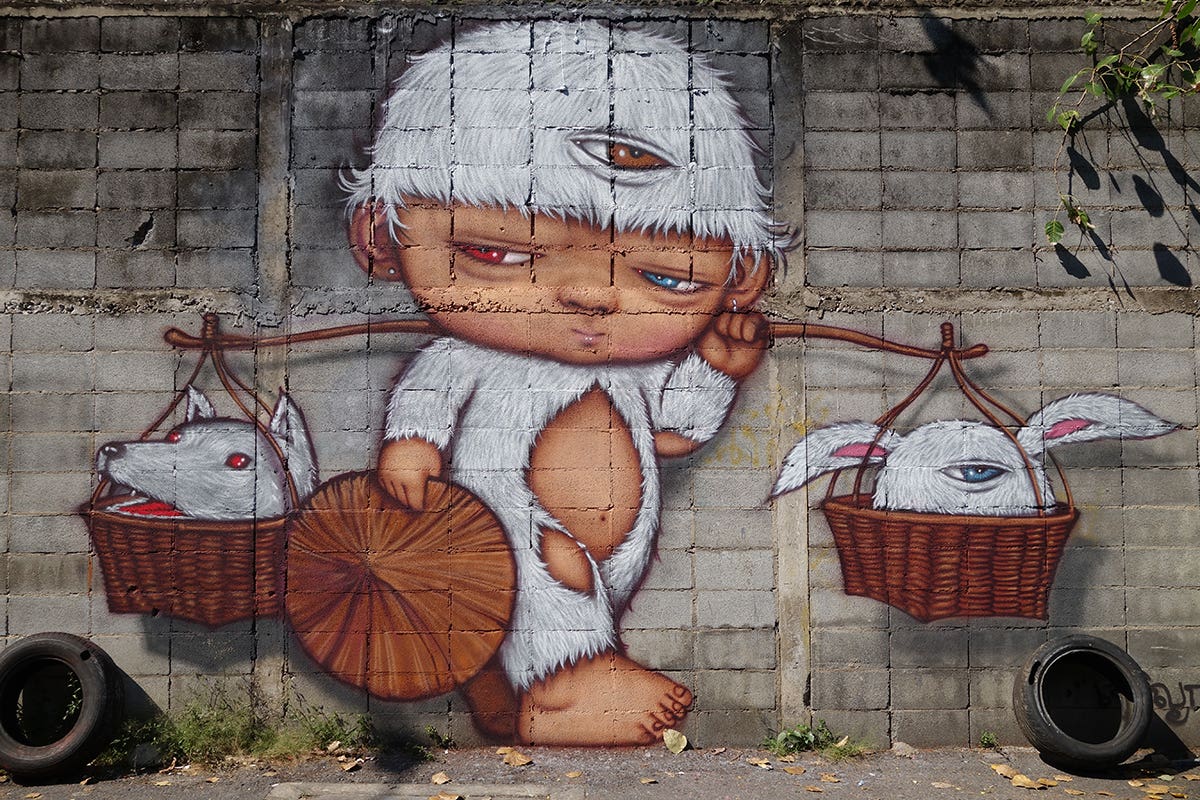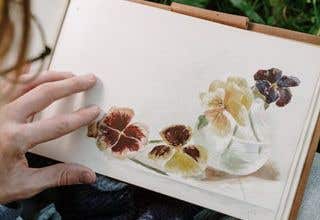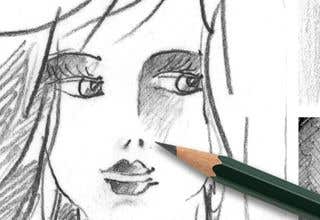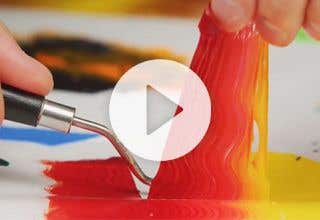
Part of discovering your skills as an artist is exploring the many tools available to you. Every artist works differently and trialling methods and techniques allows you to refine your individual style. A happy painter is a great painter, and discovery is one of art’s many joys – so delve into different methodologies until you find something that makes you smile.
If you’re just starting out your painting journey, one method you may like to explore further is grid drawing or the grid method. An inexpensive, low-tech way to accurately create an image, grid drawing will help you enlarge or scale down an image or transfer it to another canvas.
Grid drawing involves drawing a grid over your reference photo and then drawing a grid of equal ratio onto your canvas or other work surface. Designed to reproduce imagery of any size, it can be used to scale down an image for painting on something small, like a tile, or scaled up for something as large as a wall mural. Once you’ve drawn your grid you can then draw your image, focusing on one square at a time until the entire image has been transferred. You can then either erase your grid lines or paint over them.
Accuracy takes time
As mentioned above, using the grid drawing method to accurately paint an image is an inexpensive way to produce perfectly proportioned work. It does, however, come at the cost of time. Depending on how large and detailed your painting will be, this method requires careful concentration and some very basic math skills. The important thing to remember is your grid must have a 1:1 ratio, otherwise your drawing will be distorted. The lines must also be equally spaced apart, in other words; perfect squares.
Simply put, aspect ratio is the proportional relationship between height and width. It is not the same thing as dimensions or size and, unlike dimensions, a square’s ratio is always 1:1. Understanding aspect ratio will improve your drawing and understanding of proportion generally, whether you plan on actually using a grid drawing method or not.
How grid drawing works
To apply the grid drawing technique, you will first need an image to work with. You will be sketching lines across your image, so if it’s a special one, there are a number of options to ensure the original work is protected. You can either:
- Scan your image and work with a copy.
- Put it under a sheet of plexiglass and draw on the glass.
- Slip it in a freezer bag and draw your grid on the bag.
Using a ruler and a mechanical pencil (which will give you thin and precise lines) mark off dots at regular intervals along each side of the image. Keeping your ruler parallel to the edge of your paper, you can then rule the lines to create the grid. Make sure to keep the lines soft so that they are easy to remove or paint over.
Once you’ve completed your grid, you can then recreate it on your canvas or other work surface. If you’re wanting to change the size of your picture, you can use the grid to multiply the size of the squares or halve them.
For example, if you started with a grid made up on 1 inch squares, you could double the size of the image by using 2 inch squares, or halve it by using ½ in squares. It doesn’t matter how much you go up or down by, just as long as you keep the aspect ratio 1:1. There must be the same number of squares on your new canvas as on the original image, or the system won’t work.
When you are ready, set the grids side-by-side and start copying the outline of your subject into your new grid, working one square at a time. If you are right handed, start with the top left square and work downwards, then across. If you are left handed, work from the top right square. Copy exactly what you see in each box in the corresponding box on your new surface. Eventually you’ll have a complete copy of the original image, with all the proportions intact. Having kept the grid lines light, you should then be able to erase your lines fairly easily. Your underlying sketch is then ready for paint – or whatever medium you chose.
The benefits of grid method
Grid drawing is a popular system for beginner artists because it allows you to work methodically, breaking down a task into manageable sections. Working one square at a time makes accurate drawing to scale highly achievable, and creating well proportioned drawings time after time will give you the confidence to continue exploring on your artistic journey.
There are some artists who will refer to grid drawing as “cheating”, but grid drawing actually helps to train the eye to better understand aspect ratio. Whether you plan to use the grid drawing method long-term or not, exploring this technique is hugely beneficial for artists at any stage of their development.
For drawing materials, browse our online range or pop into an Eckersley's store and chat to one of our friendly staff.
See here fore more drawing materials:




